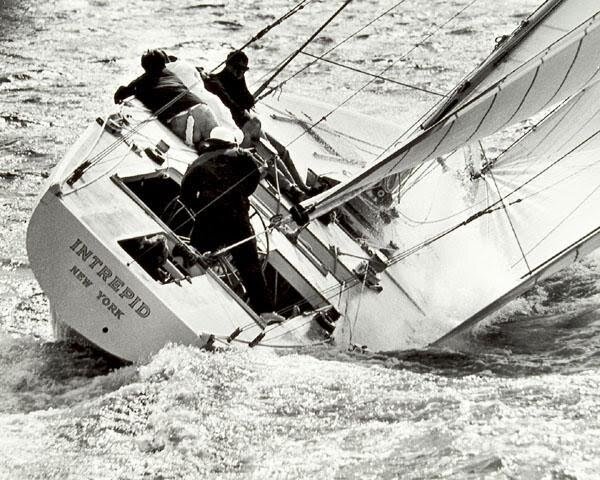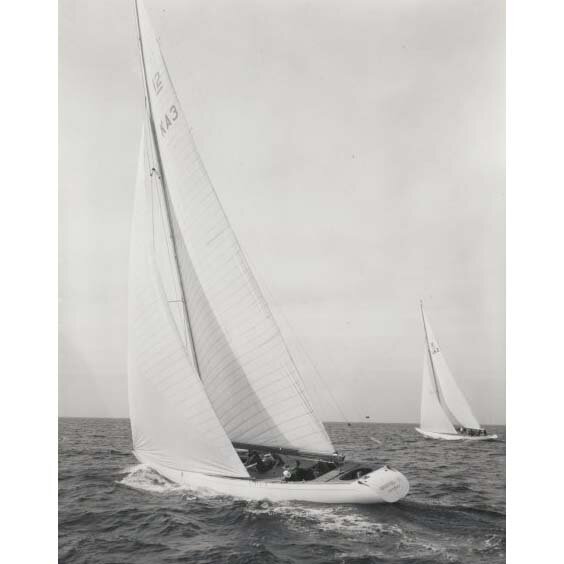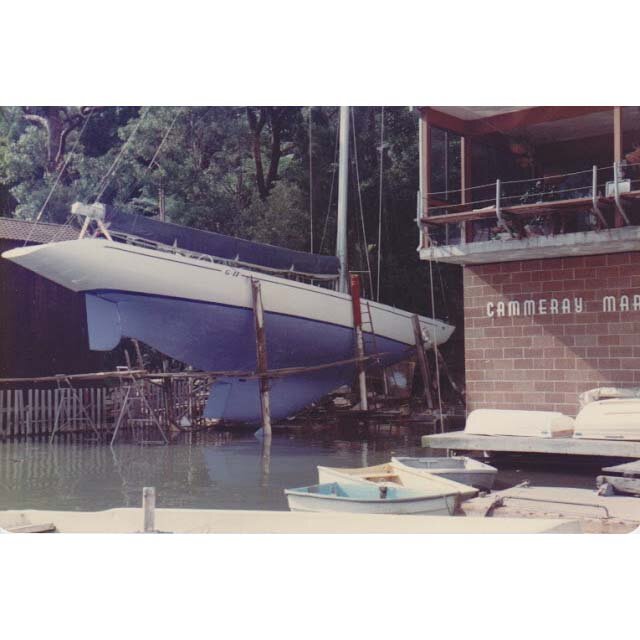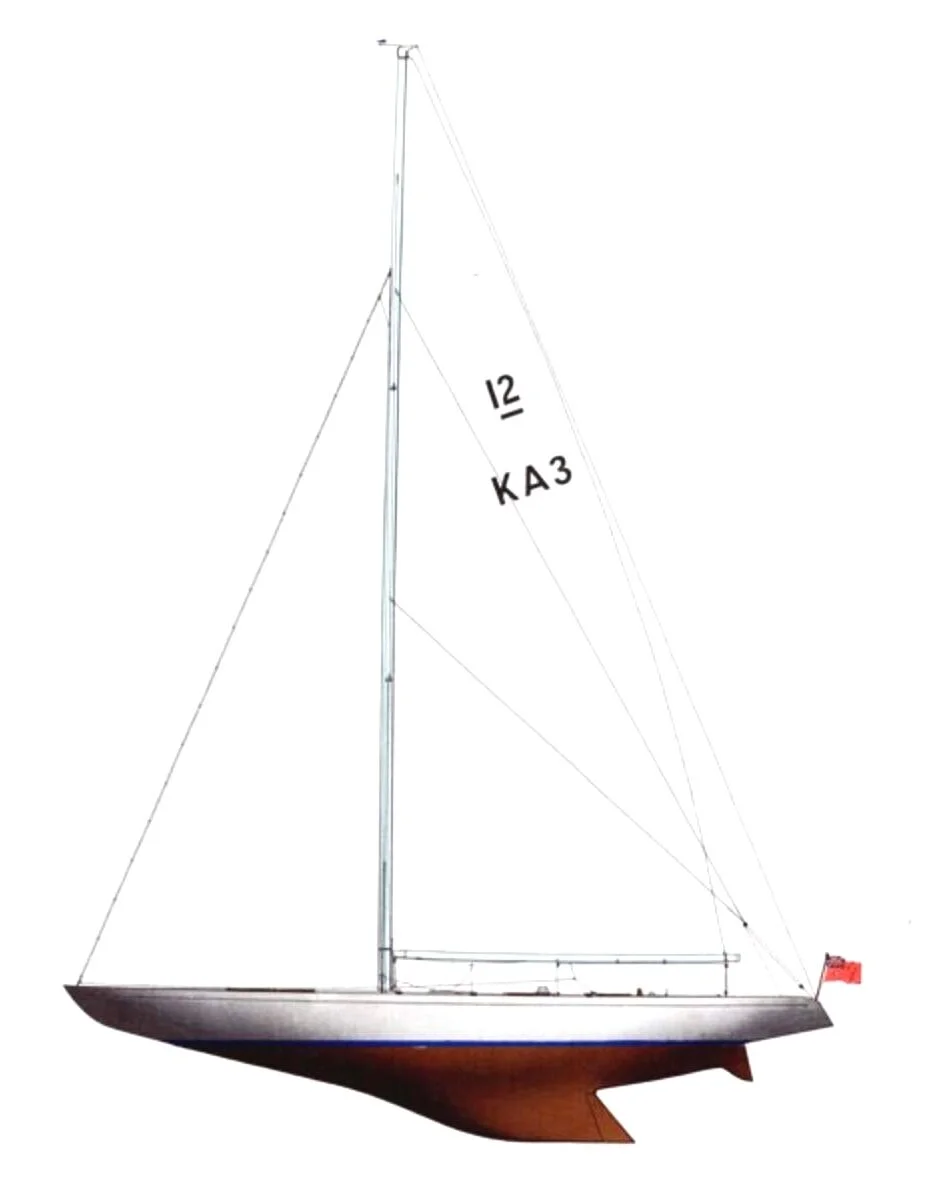Fifty-One Years Earlier …
I watched the dramatic events
unfold in the early stages of the
Prada Cup last weekend.
I must admit that subconsciously I was hoping to dislike the whole event.
Instead, I found myself riveted to the vision. Not because of tactical match-racing, which is almost non-existent, and not because of the personalities involved, but because of the sheer awesomeness of the technology.
So much seems counterintuitive: Seven and a half tonnes of boat lifted out of the water by a gentle breeze, balancing on two contact points. Boat speeds of 30 knots in 10 knots of wind. Looking for wind shifts AHEAD of you when sailing downwind. The concepts around all this take a lot of getting used to, even for a someone who has been sailing for 40 years. I suspect that for the general non sailing public it’s the incredible vision from the on-water cameras and land based long lenses that holds the attention for a few races rather than any actual understanding of the nature of the racing itself. And then there is the schadenfreude that we all try to disown but secretly harbour, in seeing these 75ft praying mantises come unstuck.
It’s gripping broadcast material, but at the end of the first weekend I also felt fundamentally unsatisfied. Upon reflection I realised, from a purely personal point of view, there are two things that I miss.
Firstly, crew work. Watching sportsmen actually perform their craft is a huge part of the spectator experience. In the AC75’s we see a helmsman clutching a wheel, a tactician swiping a tablet and grinders, grinding. That’s it! I miss watching hoists and drops and gybes and peels.
Secondly, I miss genuine old fashioned match racing tactics. Dial ups, tacking duels and luffing duels now seem to have gone the way spinnakers and keels. If the current boats pass within 100meters of each other, it's considered a “dramatic” moment.
If you’re wondering what I’m talking about with these two observations have a look at one of my favourite America’s Cup moments. It shows all the glory of brave, adventurous crew work and relentless tactical aggression.
So, I thought a little reminiscing was in order, and looked up the last time when two WOODENBOATS sailed against each other for the America’s Cup.







51 years ago, the American 12-meter INTREPID won in controversial circumstances against an
Australian upstart GRETEL II,
helmed by Sir James Hardy.
GRETEL II was launched on April 10, 1970 in Sydney for media magnate Sir Frank Packer. Built by Bill Barnett to a design by Alan Payne, she was the last America’s Cup boat to be built of wood.
Sir Frank Packer had first challenged for the America’s Cup with GRETEL in 1962, returning to Newport, Rhode Island in 1970 with the new and innovative Alan Payne design.
After defeating Baron Bich’s FRANCE in the challenger selection series 4-0, Jim (now Sir James) Hardy took on the New York Yacht Club’s defender INTREPID, skippered by US Olympian Bill Ficker.
INTREPID won the first race when GRETEL II’s David Forbes was swept overboard. He managed to hang onto a sheet and scrambled back on board.
Then, in a controversial second race, GRETEL II crossed the finish line first, but was subsequently disqualified due to a collision at the start, a decision that angered Packer.
INTREPID won the third race, but Gretel II recorded a win in race four by 1 minute and 2 seconds. INTREPID went on to win the fifth race and retain the America’s Cup for the New York Yacht Club 4-1.
Many observers, including the 1977 America’s Cup US skipper Ted Turner, believed that GRETEL II was a faster boat but that the cunning tactics of Bill Ficker and skills of the American crew was the deciding factor in INTREDID’s win.
Among GRETEL II's crew, as port trimmer, was John Bertrand who in 1983 skippered the Alan Bond-financed AUSTRALIA II to an America’s Cup victory.
GRETEL II was used as a trial horse for Bond’s SOUTHERN CROSS in 1974 and in the 1977 America’s Cup she returned to the fore as one of four yachts vying to be the Challenger for the ‘Auld Mug’. Skippered by Gordon Ingate, GRETEL II’s veteran crew became known as ‘Dad’s Army’, but the team was eliminated in the trials.






Returned to Sydney and the Royal Sydney Yacht Squadron, the 12-Metre was restored by a group of yachting enthusiasts but became neglected again until bought by NSW yachtsman Mike Maxwell.
Maxwell who commissioned a major refit in New Zealand in 2009, decided to relocate GII (as she became known) to the RYCT, his reasoning being that the open waters of the River Derwent were more suited to sailing a 12-Metre than on Sydney Harbour.
For those who want to follow the story in more detail there are some dated but informative documentaries on YouTube.
Editor // Mark Chew
//
SIGN UP to never miss the news!
GOT AN IDEA for a story? Drop us a line.


